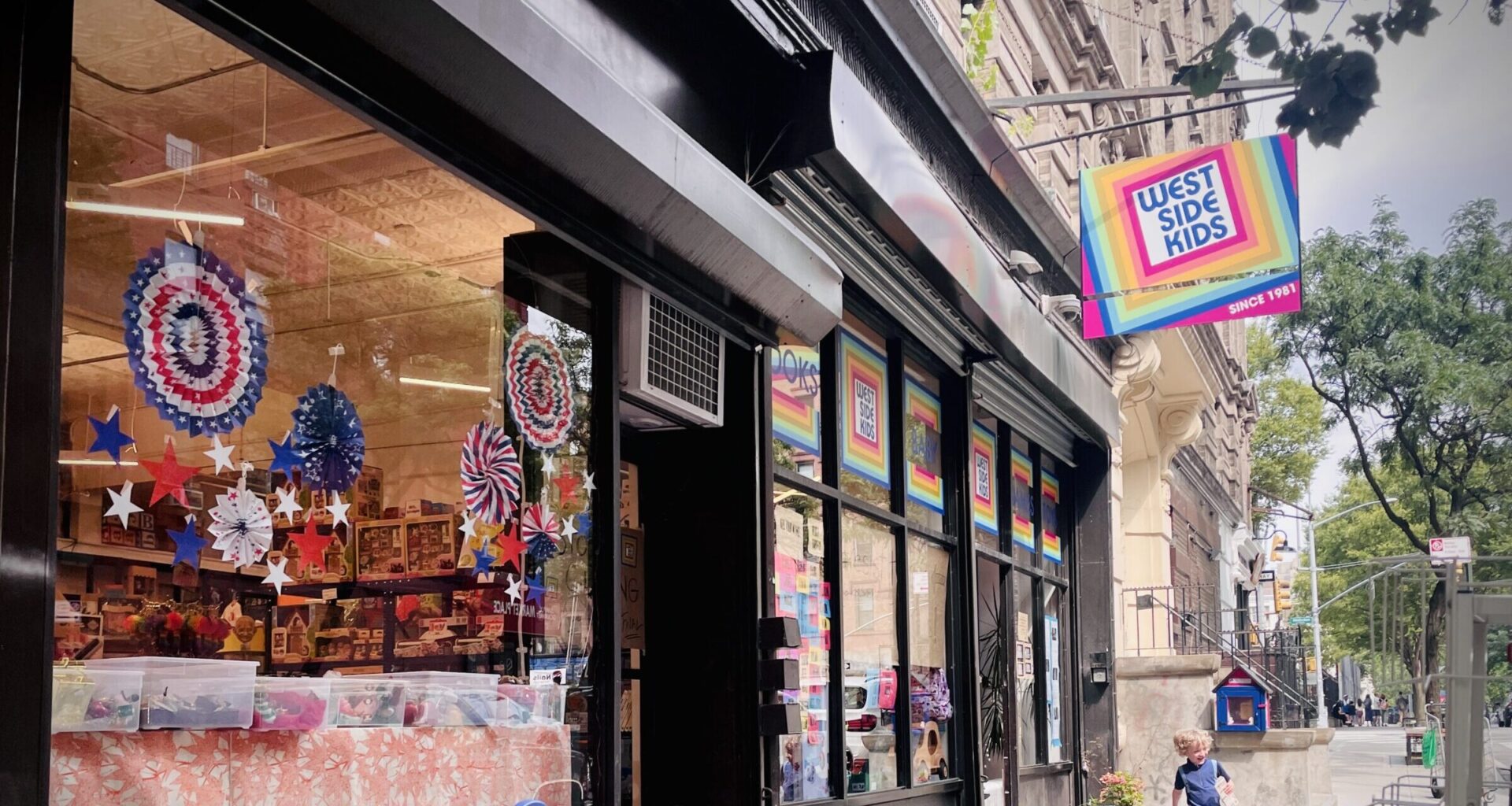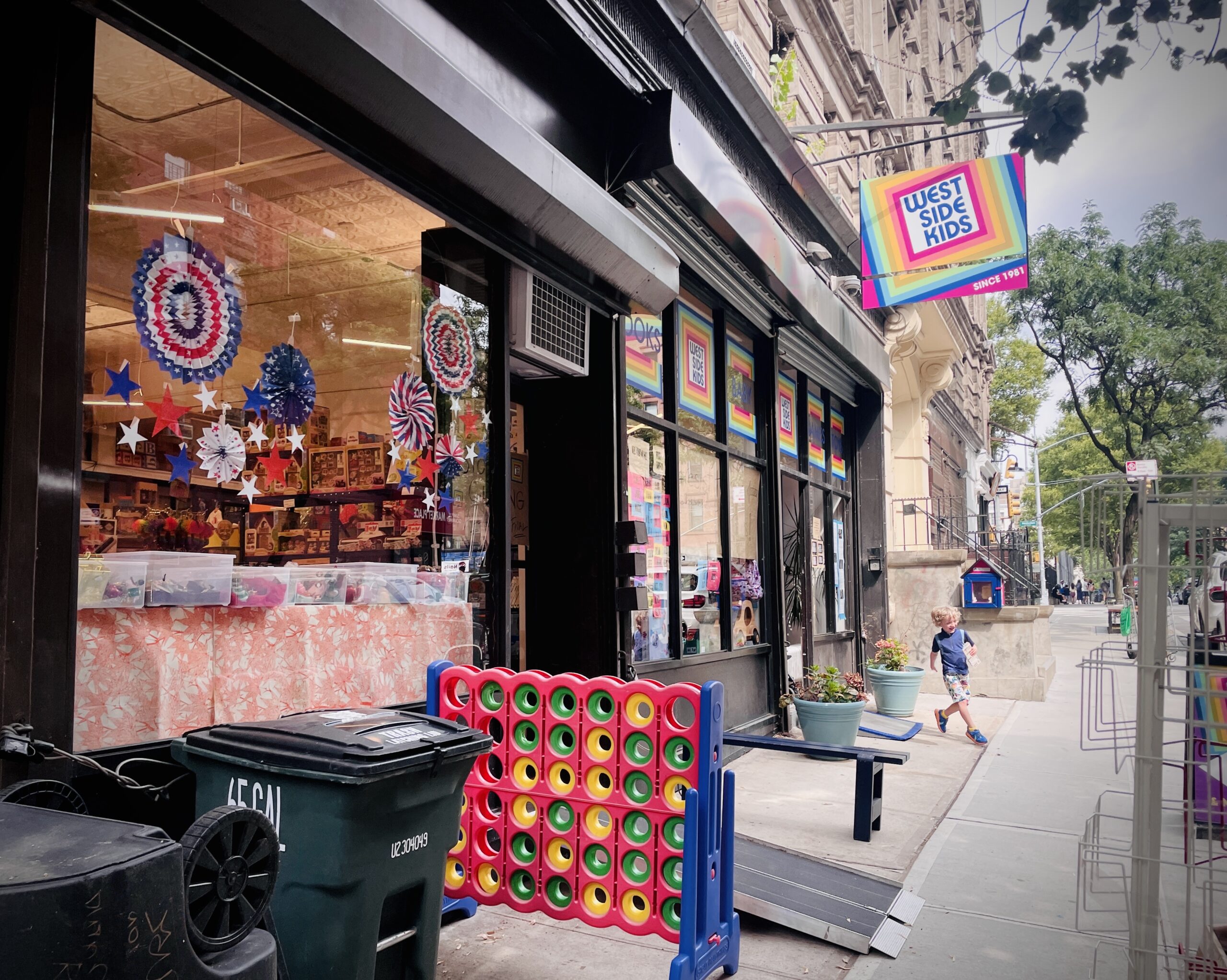 Photographs by Yvonne Vávra.
Photographs by Yvonne Vávra.
By Yvonne Vávra
Playtime is over at the corner of 84th and Amsterdam. The West Side Kids are not all right. After 44 years in business, the neighborhood toy store is closing for good. According to the owner, the killjoys came in a pair: online competition and a new player, tariffs.
Another local shop is shutting down, another burst of color turning into “Space Available.” Oof. Some of us have memories stored in there, now at risk of fading. And even if we never set foot inside West Side Kids, chances are we still liked walking past it, thinking: how lovely to live in a place where the streets feel alive, with people to watch, windows to peek into, and surprises to stumble on.
Now there’s grief, the ache of losing yet another ingredient that makes our Upper West Side stew so delicious. There’s anxiety, too, because our surroundings seem to change in step with the way we move through the world. Guilt follows. If the culprit is online shopping, then the culprit is us. It feels like we and the neighborhood are a team — evolving, winning and losing together. But do we even know how to play? The first rule is showing up.
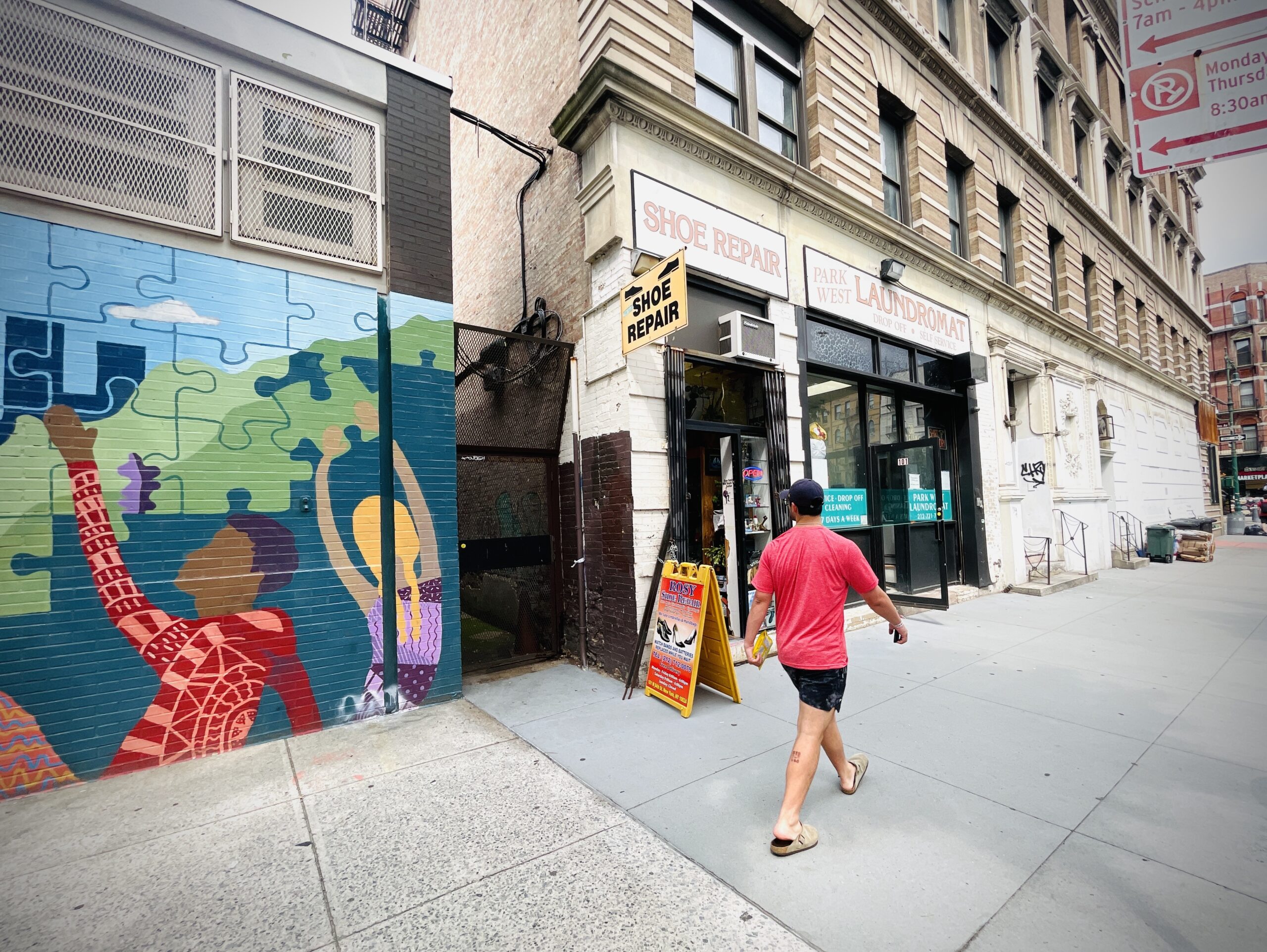 West Side Kids opened in 1981. It was the year Ronald Reagan became president, Jerry Seinfeld made his first appearance on The Tonight Show, and — with a final “And that’s the way it is” — Walter Cronkite signed off for good from the CBS Evening News. “The Adventures of Grandmaster Flash on the Wheels of Steel” dominated the summer, Upper West Sider Billie Jean King came out of the closet, Simon & Garfunkel reunited on Central Park’s Great Lawn, and the subway fare rose from 60 to 75 cents.
West Side Kids opened in 1981. It was the year Ronald Reagan became president, Jerry Seinfeld made his first appearance on The Tonight Show, and — with a final “And that’s the way it is” — Walter Cronkite signed off for good from the CBS Evening News. “The Adventures of Grandmaster Flash on the Wheels of Steel” dominated the summer, Upper West Sider Billie Jean King came out of the closet, Simon & Garfunkel reunited on Central Park’s Great Lawn, and the subway fare rose from 60 to 75 cents.
Yes! That’s how long West Side Kids has been a fixture on the Upper West Side. Whole lifetimes have been lived since then. Cultural revolutions have swept through. So many cents have been added to the subway fare. And through it all, the toy store kept the door open to magic, mischief, and the adventure of becoming, one toy at a time.
The store also held something you can’t get online: a person who knew just how to match us with what we needed. Algorithms are great at predicting what we want, but they can’t compare to a human who steps out from behind the shelf with the one thing that hits the spot. That person might not offer endless options, but they read the moment, responding with instinct. It’s the difference between being calculated and being seen.
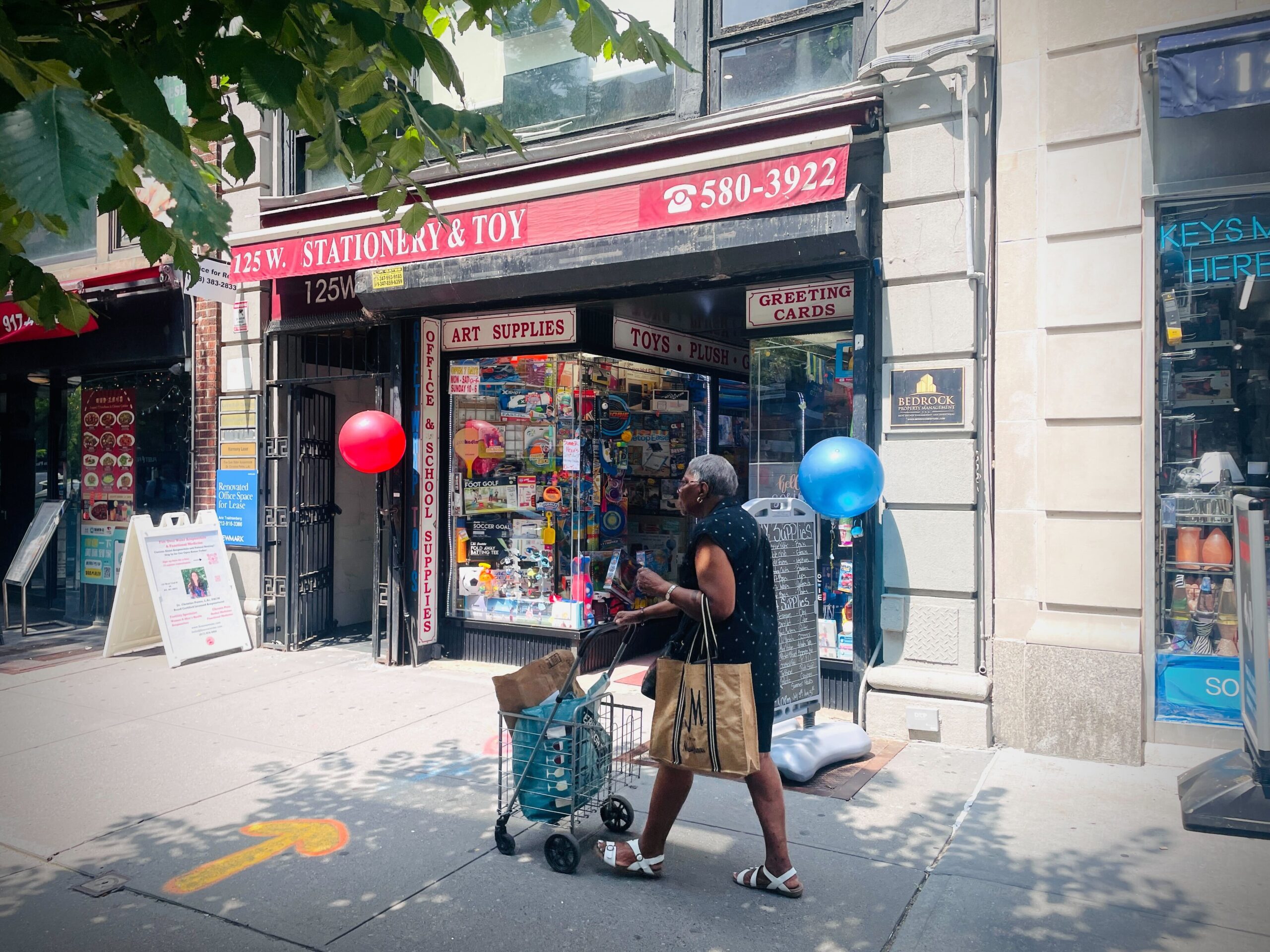 It’s a full-body thing. Pencils, for example. I have a thing for them. I like seeing them, holding them, and writing in the air with them. I also enjoy watching others pick them up. No fetish, I swear. (I think.) It’s just that I need the full ritual — the weight test, the balance test, the negotiation between fingers and pencil — before I know which one should be mine.
It’s a full-body thing. Pencils, for example. I have a thing for them. I like seeing them, holding them, and writing in the air with them. I also enjoy watching others pick them up. No fetish, I swear. (I think.) It’s just that I need the full ritual — the weight test, the balance test, the negotiation between fingers and pencil — before I know which one should be mine.
Online, I’d be hopeless. How would I even know I wanted a pencil if I couldn’t look it in the graphite eye and believe its promise to change my life? If I couldn’t see someone next to me trying out a blue one and thinking… maybe I want blue, too? An algorithm has never made me feel pencil envy, ever.
I’m afraid I can’t quite explain why I need other people around when buying a pencil. I guess you’ll have to go see for yourself. Head to Stationery & Toy on 72nd, West Side Stationers on Broadway at 99th, or anywhere in between and beyond. And if you dare — because, wow, pencils galore! Pencils for advanced penciling! — check out the rather new-to-the-neighborhood Goods for the Study on Broadway at 73rd.
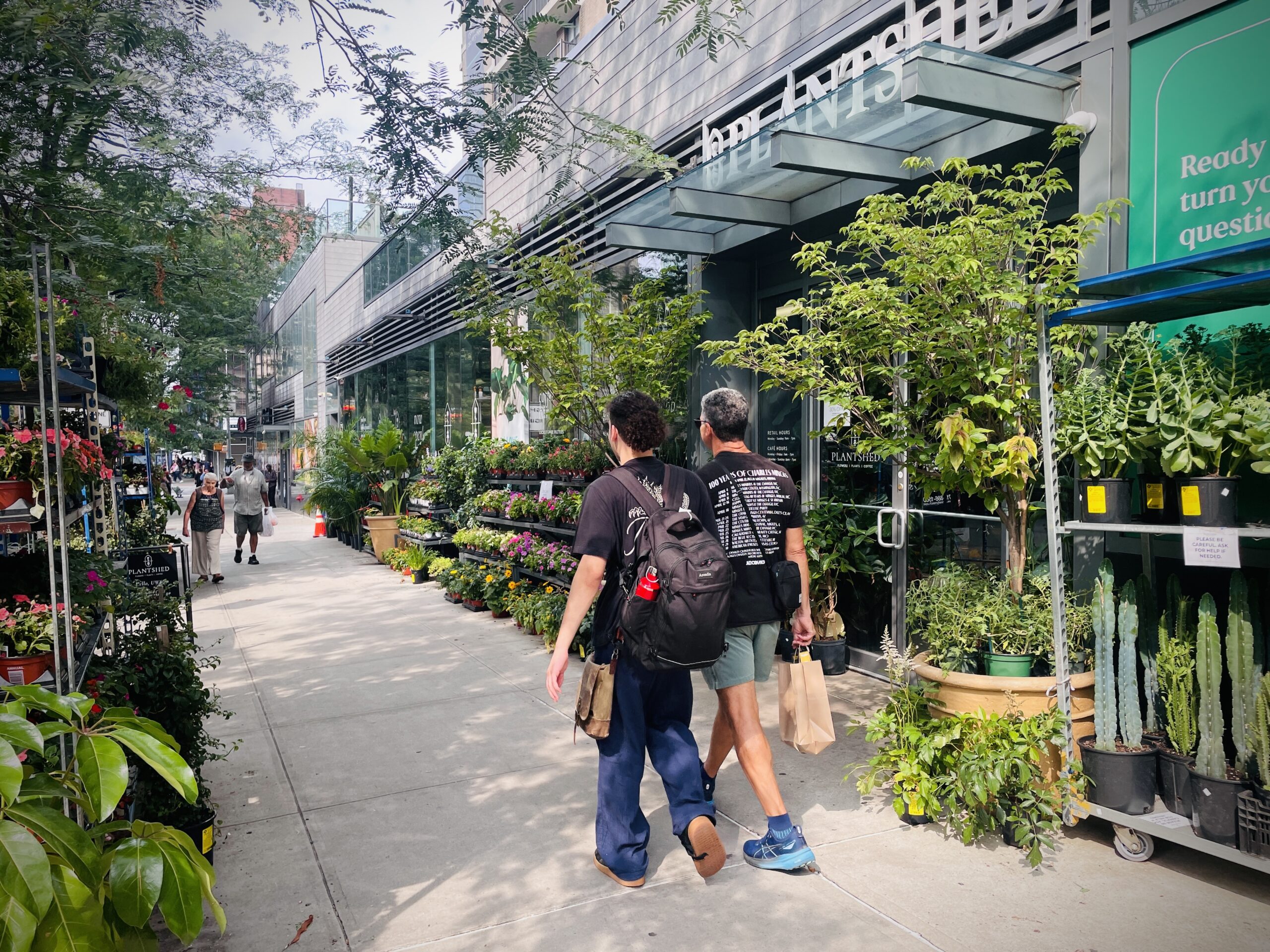 In a world that’s getting more and more disembodied, we’re craving presence in our bodies, our senses, and our feelings. Science says so, and I don’t see why common sense would disagree. What are we gonna do with all these senses we’ve got?
In a world that’s getting more and more disembodied, we’re craving presence in our bodies, our senses, and our feelings. Science says so, and I don’t see why common sense would disagree. What are we gonna do with all these senses we’ve got?
I want to overhear someone’s attempt at flirting, I want to see cheeses living and breathing side by side in the display fridge, I want to touch sweaters, and I definitely want to find out what the idea of a forest smells like when I buy soap.
Luckily, we still have many physical places on the Upper West Side where we can not just shop but wander, not just scroll but sense, not just browse but belong. But let’s not kid ourselves: this version of the neighborhood won’t survive on good vibes alone. Someone’s gotta pay for the amusement.
Yes, this is New York, where nothing ever stays the same. And yes, not everyone can afford to shop small. There’s no easy fix. But maybe, for now, the point isn’t to know exactly what to do but to notice what we have, and choose it when and how we can. When change and loss are New York facts, so are hope and the belief in new beginnings. And if all else fails, we get to bask in nostalgia, which, as studies show, makes us feel better about ourselves, connects us to each other, and eases existential threat.
Is that too heavy an ending? I knew it, should’ve bought the other pencil. The one that promised better ideas.
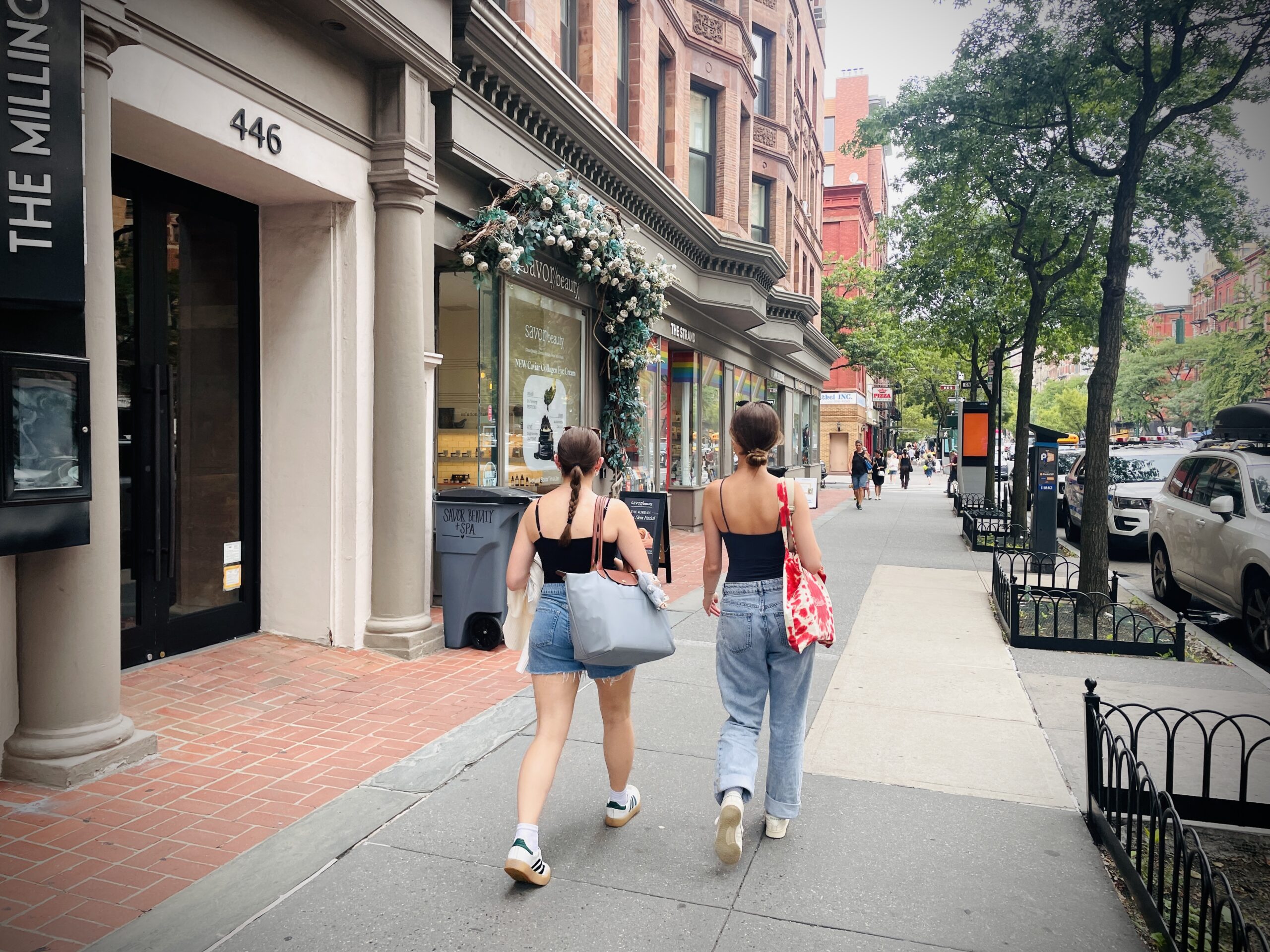 Yvonne Vávra is a magazine writer and author of the German book 111 Gründe New York zu lieben (111 Reasons to Love New York). Born a Berliner but an aspiring Upper West Sider since the 1990s (thanks, Nora Ephron), she came to New York in 2010 and seven years later made her Upper West Side dreams come true. She’s been obsessively walking the neighborhood ever since.
Yvonne Vávra is a magazine writer and author of the German book 111 Gründe New York zu lieben (111 Reasons to Love New York). Born a Berliner but an aspiring Upper West Sider since the 1990s (thanks, Nora Ephron), she came to New York in 2010 and seven years later made her Upper West Side dreams come true. She’s been obsessively walking the neighborhood ever since.
Subscribe to West Side Rag’s FREE email newsletter here. And you can Support the Rag here.
